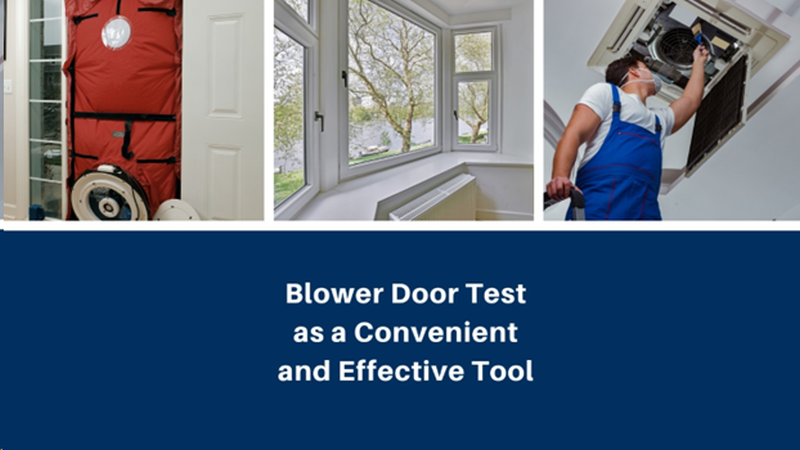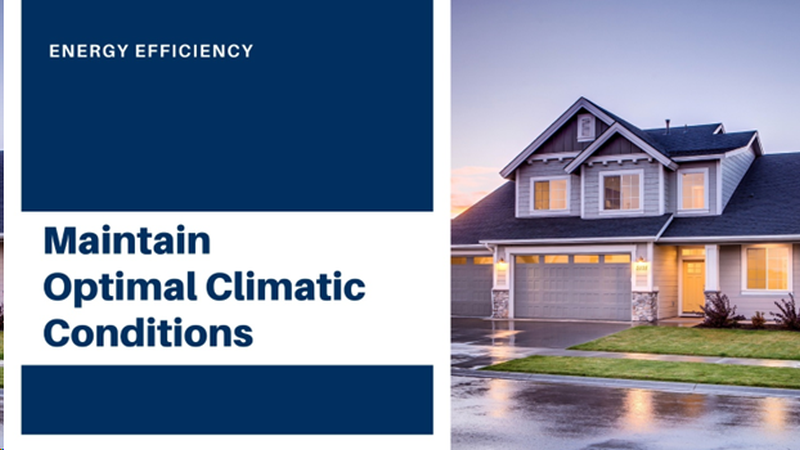The majority of people spend a greater part of their lives in enclosed rooms. These are apartments, offices, and other residential or commercial premises. Thus, they need to feel comfortable to enjoy their lives and ensure their well-being.
The comfort of living and working depends on the creation of optimal conditions, i.e. ensuring comfortable temperature, humidity, air circulation, etc. Employee productivity (the speed and quality of performed duties) is highly affected by an indoor climate in rooms. Optimal space in dwellings affects the feeling of satisfaction and coziness.
Why is It Important to Create and Maintain Optimal Climatic Conditions in Premises?
An indoor climate plays a crucial role in the feeling of comfort. However, besides a high contribution to the creation of a cozy atmosphere in rooms, the climate performs other vital functions:
1. Cause a cost-effective use of electronics, HVAC devices, and other equipment
People tend to use different devices for managing an indoor climate. These are humidifiers, air conditioners, heaters, etc. All these devices consume power for operation. Running in optimal mode prevents increased wear, reduces expenses on paying for utility bills, and makes systems eco-friendly, decreasing the amount of consumed power.
2. Prevent diseases and ensure human health and well-being
Living or working in improper conditions leads to health worsening and chronic diseases. For example, constant stay in high-humidity rooms leads to aggravated respiratory diseases, such as asthma.
3. Prevention of molding
High-humidity space is the perfect breed for mold growth and the emergence of other forms of bacteria. Keeping an indoor environment within a norm allows for preventing such nasty consequences.
After all, the maintenance of optimal climatic conditions is all about comfort and a pleasant existence for humans.
Air Barrier Testing: Essence & Benefits
To avoid the above-mentioned consequences, dwellers or building owners must prevent continuous contact of an indoor climate with an outdoor environment. But how to identify such contact? Specialized air barrier testing is performed to identify leaks and detect construction defects.
Air permeability is the airtightness of a building or room. Any building has an air barrier that prevents the free penetration of outside air into the premises. Violations and defects in the air barrier are called air permeability defects. Air permeability (tightness) affects:
- Microclimate (temperature and humidity)
- Durability of building structures
- Ventilation system
- Energy efficiency
In order to measure air permeability, specialized verified and calibrated equipment (a blower door) and a thermal imager are used. With the help of the blower door, it’s possible to simulate a situation in which the wind blows on the building simultaneously from all sides. If the construction is not airtight, outside air will begin to intensively flow into the room through cracks and defects in windows, walls, floors, and ceilings. These defects are easily detected and recorded using the thermal imager.
Reasons for Making Air Barrier Testing
The air barrier measurement characterizes the quality of the “envelope” of any building or construction. Testing measurements will help solve the following problems:
- You need to determine the reasons for high heating and ventilation costs
- An indoor air is very humid or dry
- Fungi and mold grow in rooms
- Drafts
- External odors and sounds easily penetrate into premises
- Frost appears in rooms
- The operation of the forced ventilation system is disrupted HVAC does not work properly or works intermittently
- You are buying a house or apartment and want to make sure that it is properly insulated and there are no severe construction defects
- Before repairing or reconstructing a building, you need to figure out what to insulate, repair, and improve
As a rule, problems with an air barrier arise in the event of damage and defects in doors, windows, ceilings, and walls, for example:
- Cracks and leaks in structures
- Poor quality brickwork
- Vapor barrier ruptures
- Defects in the installation seams of windows and doors
As practice shows, increased air permeability is the cause of 50% of thermal energy losses in modern buildings. The often-observed phenomenon of dry indoor air in winter is caused by the fact that cold outside air, containing a small amount of water vapor, penetrates into the room through defects and cracks. After heating, the air humidity in the room becomes below the minimum acceptable level of 40%, and the microclimate in the room becomes very uncomfortable.
Blower Door Test as a Convenient and Effective Tool for Building Defects Detection.

A blower door test comes as part of air barrier testing. It’s an effective procedure that helps identify construction defects and improve building quality. The test is carried out by professional technicians who know all subtleties of the test process and can interpret the obtained data correctly. The procedure falls into three main stages:
1. Preparation
A preparatory step implies visiting a site and assessing the building. Specialists come to the site and evaluate the area, construction materials, and other peculiarities. Based on the initial evaluation, they make a testing plan, where the number of fans and the place of installation are specified.
2. Testing
Equipment is delivered to the site and installed. Large industrial fans are used to direct the airflow and imitate aggressive environmental conditions. Fans are synched to manometers and software that fixes indicators and records figures.
3. Analysis
Further, specialists analyze the obtained data and make a testing report. If some clarifications or corrections are needed, they perform additional tests, such as smoke testing or thermal imaging. The final testing result is provided in a certified report.
The blower door test is advantageous due to the high accuracy of data that helps eliminate construction defects and enjoy perfect indoor climate conditions and develop effective HVAC systems for the maintenance of an optimal environment on premises.
The constant interference of external environmental factors disturbs climates in enclosed premises, causes equipment performance inefficiency, and poses a threat to human health. Thus, it’s important to install proper insulation and guarantee high-quality building construction without defects. The blower door test helps cope with this problem easily and effectively.
Article Submitted By Community Writer




